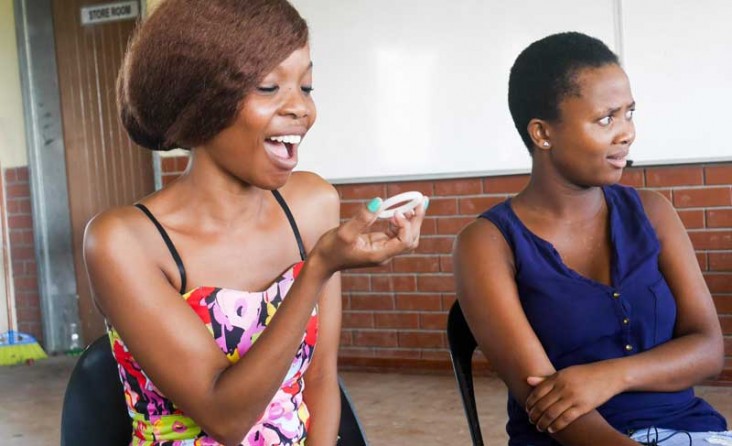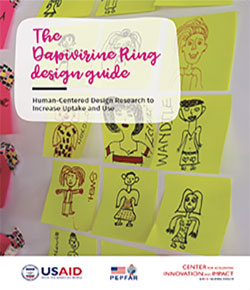- What We Do
- Agriculture and Food Security
- Democracy, Human Rights and Governance
- Economic Growth and Trade
- Education
- Ending Extreme Poverty
- Environment and Global Climate Change
- Gender Equality and Women's Empowerment
- Global Health
- Water and Sanitation
- Working in Crises and Conflict
- U.S. Global Development Lab


Elizabeth Russell PhD, MSc, is a Senior Advisor for Biomedical Prevention Technologies in the Research Division of the Office of HIV/AIDS. She provides technical assistance for pre-clinical and clinical research projects supported by the U.S. Agency for International Development (USAID) for new microbicide products.

Emily Harris, MA, is a Public Health Advisor in the Research Division in USAID's Office of HIV/AIDS. She leads multiple project teams dedicated to accelerating the introduction of innovative prevention and treatment products.
Recent Blog Posts
- HIV Vaccine Awareness Day: Renewed Hope and Determination
Margaret McCluskey and Giacomo Gorini - May 18, 2017 - Partnering with Local Institutions to Strengthen HIV Research Capacity
Aisha Yansaneh - May 1, 2017
Over the course of 4 months of research, we interviewed staff at 10 locally-based organizations and spoke with 115 young women and 47 young men in KwaZulu Natal, South Africa, and Central Uganda. We shared tea with community leaders, drew each other’s portraits, challenged each other’s assumptions and traded a constant stream of WhatsApp messages.
Why? To see how human-centered design, or HCD, can encourage uptake and effective use of the dapivirine ring – the first long-acting, woman-controlled method for reducing the risk of HIV infection. HCD is an iterative approach that uses creative techniques to engage end-users directly in the development of products and services that are rooted in their day-to-day desires and realities. Our team used HCD to design and test messages, materials and experiences that help young women decide if the ring is right for them and how to properly use it to protect themselves from HIV infection.
The research was led by the HCD design firm, the Dalberg Design Impact Group, in partnership with the Microbicides Branch in the Office of HIV/AIDS and USAID’s Center for Accelerating Innovation and Impact (CII), the team that brings and applies business-minded approaches to the development, introduction and scale-up of health interventions to USAID’s Bureau for Global Health. Other collaborators included the developer of the dapivirine ring, the International Partnership for Microbicides, and a growing grassroots community research and advocacy group called CHEDRA Uganda.
What did the HCD process entail? We met with young women and the people who influence their lives, such as male partners, health providers and community leaders, and asked for their thoughts on sexual health and their impressions of the dapivirine ring. We spoke to them in individual interviews, learned about their relationships through role-playing and asked them to market the dapivirine ring to us in workshops. Through these and other interactions, we learned who these young women turn to when they need advice about a sensitive issue, what motivates them to go to a health clinic and how comfortable they feel talking to their partners about sex. They held and twisted the dapivirine ring, and we listened to their potentially embarrassing, yet incredibly practical, questions and concerns: But what if it falls out? Will my partner feel it? Do I take it out while bathing or during menses?

Answering these questions is critical to ensuring that women feel comfortable enough to use the ring. The next step was doing just that, while also doing the real design work of finding creative ways to introduce young women to the dapivirine ring. These “concepts” (as they are known in the design world) were tested and refined with young women, men, health practitioners and community leaders to make sure they made sense and did not interfere with their choice to potentially use the ring to help protect them from HIV infection. These design concepts and a summary of the research process have been compiled in the recently released Dapivirine Ring Design Guide. The design concepts in the guide will be further refined based on the experiences of young women who actually use the dapivirine rings in ongoing clinical trials. These designs will be broadly rolled out if the dapivirine ring is approved by regulatory authorities.
While this research is specific to the challenges related to young women using the dapivirine ring, it underpins the importance of integrating HCD to reach the UNAIDS 90-90-90 global targets. By hearing directly from our beneficiaries, we are better able to understand and address potential issues for the many other HIV prevention methods in development. We look forward to following the progress of the dapivirine ring as it currently moves through the regulatory approval process and seeing how HCD is utilized in future research to help control the HIV/AIDS epidemic.







Add new comment